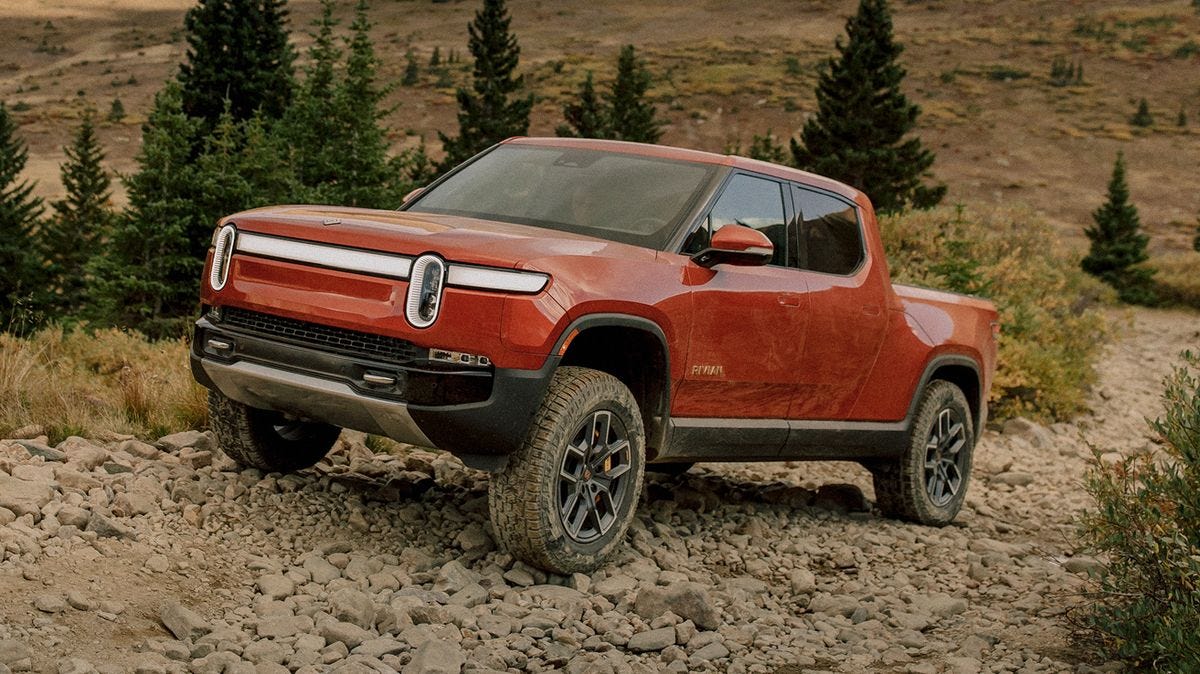Electric vehicles are no longer just about range, torque, and charging speed. As the automotive industry shifts away from internal combustion engines, the value of a car increasingly hinges on the strength of its software. Much like smartphones or computers, today’s EVs are expected to evolve after purchase.
That expectation hinges on one capability: over-the-air updates. These updates allow manufacturers to push new features, fix bugs, improve system performance, and even enhance safety all without requiring the vehicle to visit a service center. In a market that prizes flexibility and innovation, this single function can shape how customers view their cars over time.
Not all manufacturers have embraced this shift with equal urgency. Some have built their vehicles from the ground up with OTA updates in mind, integrating centralized software platforms that allow deep access to multiple vehicle systems. Others, especially traditional automakers, have been slower to adapt.
Their cars often rely on outdated patch systems that require manual installs at dealerships or limit updates to only certain parts of the vehicle, such as the infotainment screen or navigation database.
The result is a growing divide in the EV world not between luxury and affordable models, but between those that continue to improve after purchase and those that remain frozen in their original software state.
Consumers are beginning to notice this difference. An EV with a robust OTA system can feel fresh and modern for years, receiving meaningful updates that improve everything from driving dynamics to user interface design. This creates a sense of long-term value.
Owners don’t just get the car they bought they get a version that improves quietly and steadily over time. In contrast, vehicles with weak or inconsistent patch systems can begin to feel dated surprisingly quickly. Even if the hardware is strong, the lack of ongoing digital support can make a car feel neglected or incomplete.
The contrast is especially striking because the consequences reach beyond entertainment or aesthetics. Updates can influence core functionality. Improvements to battery management systems, for instance, can increase range, reduce charging time, or prevent degradation.
Revisions to driver assistance software can make adaptive cruise control safer or lane centering more reliable. Without a strong update infrastructure, manufacturers lose the ability to fix problems or respond to customer feedback without requiring physical intervention.
This not only causes inconvenience but also places them at a disadvantage as competitors continue to evolve their vehicles from afar.
It’s also important to consider the customer experience tied to software updates. With a strong OTA setup, updates are delivered silently or with minimal user effort.
Users get a notification, tap to confirm, and return to an upgraded vehicle. There’s no need to schedule service, no waiting at a dealership, and no confusion about whether a problem has been addressed.
On the other hand, vehicles without modern OTA support force owners into old habits. Fixes depend on service schedules, vary between dealership networks, and often go undocumented or unnoticed. This gap in customer satisfaction is widening as drivers become more accustomed to seamless digital services in other areas of their lives.
As electric vehicles become more common and technologically advanced, software will continue to separate the frontrunners from the rest. It’s no longer enough to offer a competitive range or a stylish design.
The real question is whether the vehicle you buy today will be better, smarter, and safer a year from now and whether the manufacturer has built the infrastructure to make that happen.
This article compares five electric vehicles that offer reliable, meaningful OTA updates with five that still struggle with outdated, unreliable patch systems. Each of these examples shows what happens when software is either treated as a priority or left as an afterthought, and what that means for the people driving them.
Also Read: Top 10 Cars That Stay Worry-Free After Warranty Ends Offering Unmatched Reliability
5 EVs That Benefit From OTA Updates
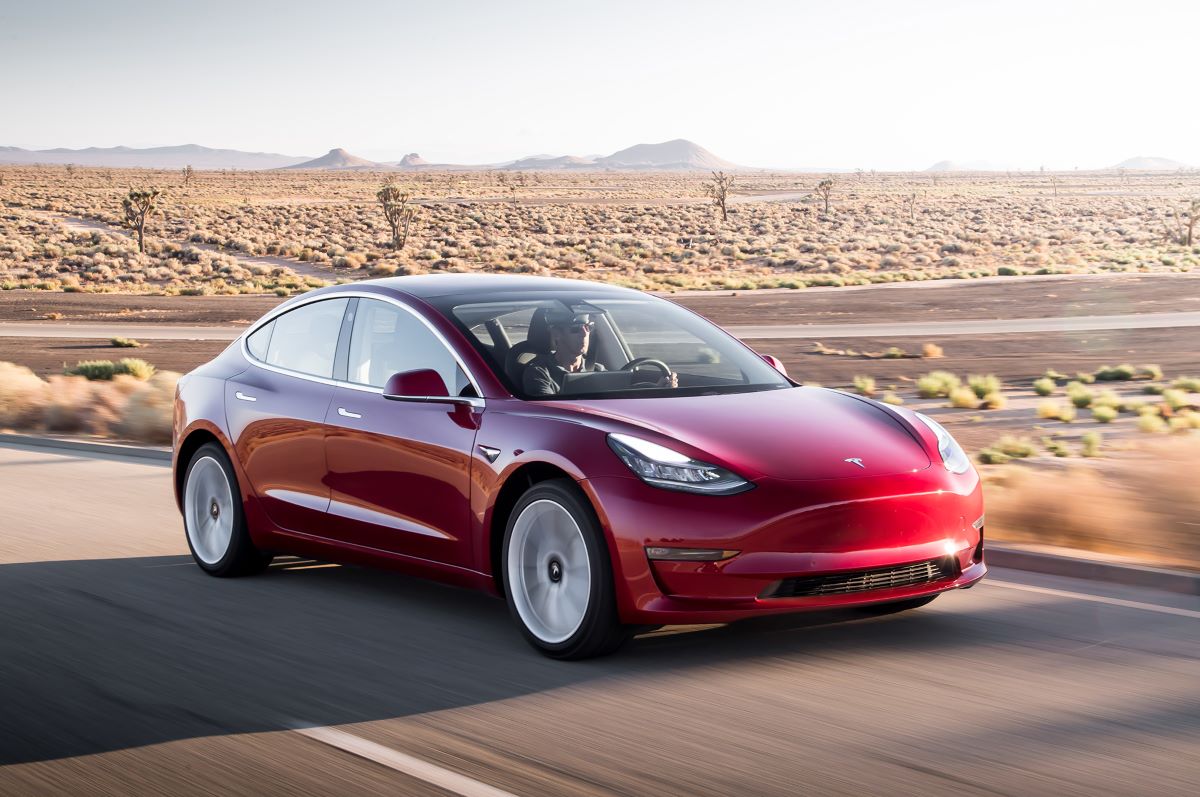
1. Tesla Model 3
The Tesla Model 3 is the benchmark for OTA (over-the-air) update excellence in the EV market. From its inception, the vehicle was engineered with a digital-first mindset. Every component that could be governed by software was intentionally designed to be remotely accessible.
Tesla’s proprietary software platform manages everything from battery management and performance metrics to entertainment systems and even seat heaters.
This deeply integrated system allows for expansive and meaningful changes through software alone. It’s not just about adding minor tweaks Tesla often uses OTA updates to roll out groundbreaking features that reshape how the car operates day-to-day.
What sets Tesla apart is the frequency and ambition of these updates. Rather than sticking to a quarterly or annual cycle, Tesla pushes updates whenever they are ready. Sometimes this means multiple updates in a single month.
Over time, Tesla Model 3 owners have received enhancements such as increased driving range, better energy efficiency, added driving visualizations, full self-driving beta improvements, gaming integrations, and more robust safety alerts.
These are not superficial upgrades; many of them change how the car behaves under real-world conditions. It is rare in the automotive space to feel like your car is actively improving itself even after years of ownership, but with Tesla, that sensation is routine.
Another major advantage is Tesla’s uniform platform across its vehicle lineup. Unlike legacy automakers that piece together hardware and software from various suppliers, Tesla builds almost everything in-house, using a centralized system that reduces fragmentation.
This uniformity means that updates can be deployed to large portions of the fleet simultaneously and with consistent results.
Owners don’t need to worry about whether their trim or model year is compatible; the rollout is smooth and inclusive across the board. This is a significant reason why customer satisfaction with Tesla updates remains so high.
Tesla also leverages its OTA system as part of its customer engagement strategy. Patch notes are clear, well-documented, and available right in the vehicle’s infotainment screen. The app sends notifications about pending updates, and installations are painless.
Tesla empowers users with scheduling options so that updates can occur overnight or at any preferred downtime. For software-focused drivers, this system creates a sense of control and confidence, reinforcing the feeling that they’re part of an evolving ecosystem rather than just owning a static machine.
The Tesla Model 3 sets the standard for what OTA should be in an electric vehicle. It’s not merely a feature it’s a foundation. Tesla’s success shows what’s possible when an automaker takes software seriously and treats it with the same importance as engine design or crash safety.
The Model 3 proves that a car can grow smarter, faster, safer, and more fun over time, all without needing a trip to the shop. That kind of value, once rare, is now expected by many because of Tesla’s success.
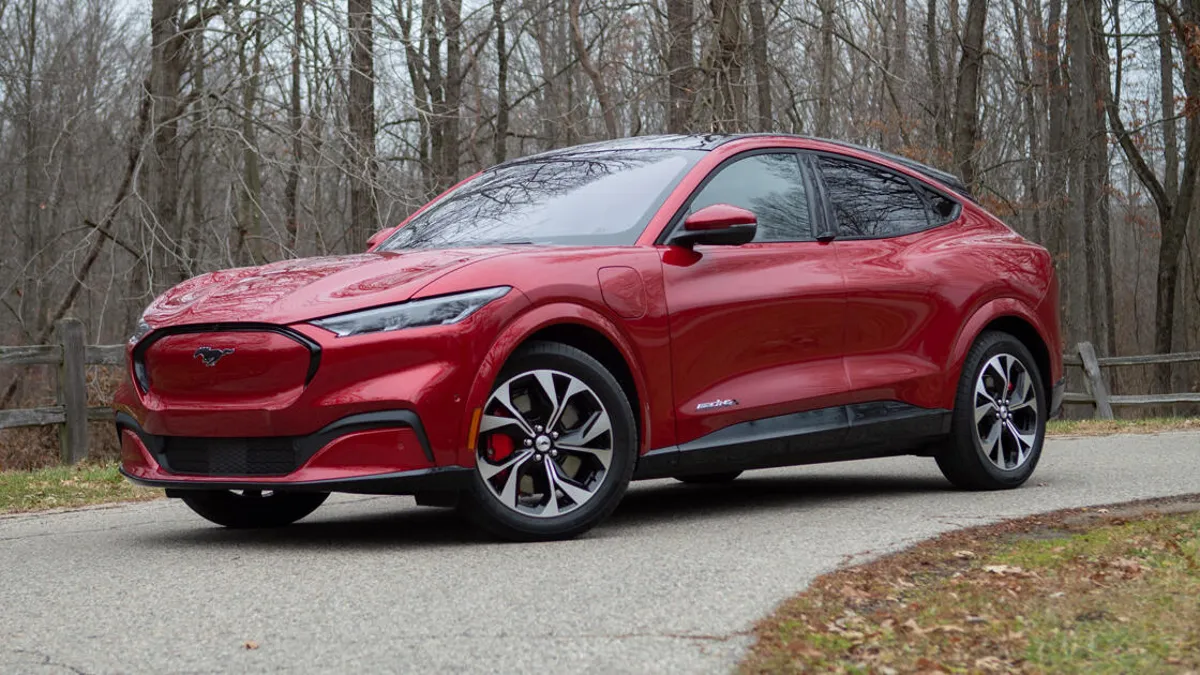
2. Ford Mustang Mach-E
The Ford Mustang Mach-E marks a significant turning point in the traditional auto industry’s relationship with digital vehicle management. Ford, a company known for sturdy trucks and gas-powered performance vehicles, surprised many by releasing a software-rich, OTA-capable EV in the form of the Mach-E.
Their OTA framework, branded as “Power-Up,” is not only competent but ambitious. It represents Ford’s willingness to reshape itself for the new era of connected vehicles and offer its customers a continuous improvement model that was previously uncharacteristic of legacy automakers.
Since launch, the Mach-E has received a steady stream of updates that go far beyond basic bug fixes. Ford has delivered real functionality improvements, such as extending the vehicle’s range through refined battery management, enhancing adaptive cruise control behavior, and integrating more voice command features.
Even the BlueCruise hands-free driving system, which has been gradually expanded, is deployed via OTA. These are the kinds of upgrades that influence both driving confidence and daily convenience. For owners, it’s reassuring to know that their vehicle isn’t frozen at the version it was sold with it’s on a path of digital enhancement.
One of the standout achievements in the Mach-E’s OTA experience is the refinement of interface usability. Ford has shown a willingness to respond to user complaints and feedback.
Updates have smoothed out responsiveness in the SYNC 4 infotainment system, improved smartphone pairing, and added options like Amazon Alexa integration.
These aren’t just quality-of-life changes they signal that Ford is listening, iterating, and adjusting as the vehicle matures. That level of user engagement isn’t often associated with traditional automakers, but Ford is attempting to rewrite the script.
Despite the strength of its system, Ford has had to work through the challenges of transitioning a massive, century-old organization into a software-focused environment. Not every update has gone perfectly, and not every Mach-E trim receives changes simultaneously.
But compared to its closest legacy rivals, Ford has moved quickly and smartly. The “Power-Up” brand creates a sense of momentum and ongoing investment in the vehicle, showing buyers that the company isn’t just thinking about hardware, it’s thinking about how to support them long after the point of sale.
The Mach-E’s success in OTA delivery has broader implications. It demonstrates that a company doesn’t have to be a tech startup to offer meaningful software updates.
With the right planning, investment, and customer transparency, even a 100-year-old automaker can transition into the future. Ford is showing that modernization is achievable at scale, and the Mustang Mach-E leads that charge.
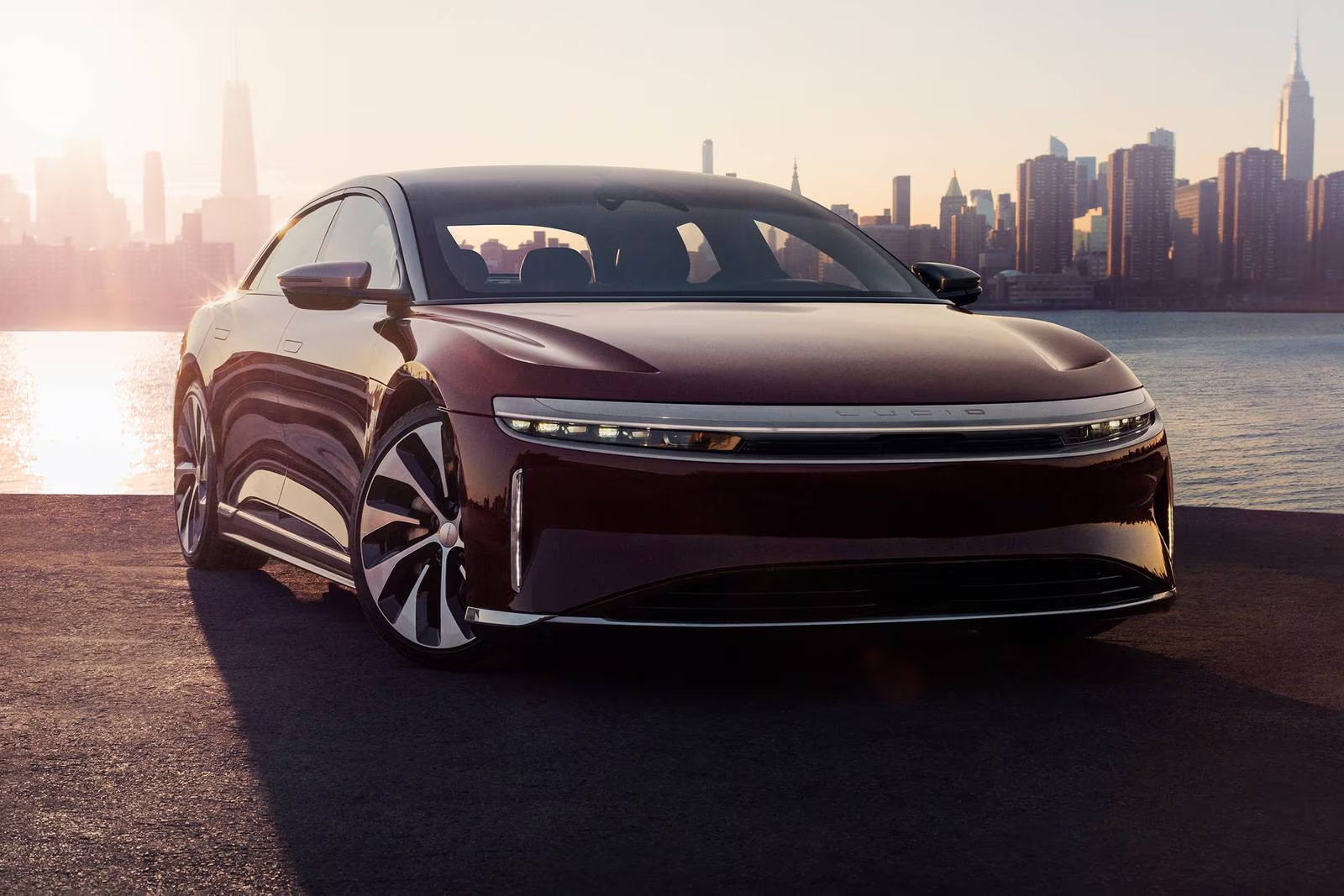
3. Lucid Air
Lucid Motors made a bold entry into the luxury EV space with the Lucid Air, and from the start, the vehicle’s software capabilities were positioned as a central pillar of its identity. Lucid’s strategy has been to design the vehicle’s electrical backbone for broad OTA compatibility right from the start.
This planning allows the Lucid Air to receive deep-level updates across nearly every subsystem, including core driving logic, battery optimization, HVAC calibration, and infotainment performance. The software-first mindset is evident in both the vehicle’s responsiveness and its update cadence.
Lucid’s OTA update platform operates on a high-bandwidth, high-frequency infrastructure that allows for rapid deployment. The updates have been substantive and well-documented, covering everything from camera recalibration for driver-assist features to improved mapping accuracy.
Even the feel of the accelerator pedal and regenerative braking levels can be modified via software. Lucid has committed to making its cars smarter and more refined every few months, and they have delivered on that promise, setting a high bar for luxury EV software ecosystems.
One important element that distinguishes Lucid’s OTA strategy is communication. Each update comes with detailed release notes, accessible via the app and in the vehicle. These notes don’t just list what’s changed they explain why the changes were made and what users should expect.
This builds a strong sense of trust between brand and driver, which is critical for a relatively new automaker trying to establish itself in the premium space. Transparency builds loyalty, and Lucid understands that the relationship between driver and software matters as much as the driving feel.
Lucid’s user interface is also built to evolve. Instead of locking the experience into a single layout, the company allows customization and has redesigned portions of the UI through updates.
Graphics improve, controls are added, and usability enhancements are regularly introduced. In the luxury car market, this dynamic experience is particularly important. Customers paying for high-end vehicles expect perfection and they expect that when something isn’t perfect, it will be improved without hassle.
The Lucid Air, with its stunning design and unmatched range, already makes a strong case as a luxury flagship. But what takes it further is Lucid’s full embrace of OTA as a core business strategy.
By blending rich updates with elite engineering, Lucid doesn’t just sell a vehicle it sells a technology platform that adapts, learns, and gets better over time. For a brand new to the automotive space, that kind of confidence is both rare and refreshing.

4. Rivian R1T and R1S
Rivian’s R1T pickup and R1S SUV reflect a new breed of vehicle that treats software not as an accessory but as a cornerstone of the ownership experience. Rivian knew from the beginning that its target audience outdoor enthusiasts and tech-savvy buyers would demand a digital platform that evolves with time.
To meet that expectation, Rivian built its own OTA infrastructure in-house, capable of delivering updates that span nearly every system in the vehicle. The system is fast, secure, and flexible, and Rivian has used it to push meaningful updates regularly.
One of the most impressive aspects of Rivian’s OTA model is its commitment to functional upgrades. Early adopters have seen updates that significantly improve charging behavior, refine ride quality through adaptive suspension tweaks, and add new off-road drive modes.
These aren’t minor bug fixes they directly affect how the vehicle performs in real-world conditions. Rivian has even released updates that help reduce phantom battery drain, a common issue in early EVs. These software improvements allow the company to keep its vehicles competitive even as the hardware ages.
Another strong point is Rivian’s approach to community engagement. The company uses its app and digital platforms to communicate with owners regularly about upcoming updates.
Forums and social media are also part of their feedback loop, giving users a voice in how the vehicles evolve. When an update drops, owners don’t feel blindsided they feel included. That two-way relationship is increasingly important in a market where brand loyalty often comes down to how well a company listens and adapts.
Also Read: 10 Cars That Are Still on the Road From the Early 2000s
5 EVs With Unreliable Patch Systems

1. Nissan Leaf
The Nissan Leaf is one of the oldest and most recognizable electric vehicles. Its legacy as an early mover in the EV market is undeniable, and it deserves credit for helping to normalize electric mobility. However, when it comes to software flexibility and update infrastructure, the Leaf shows its age.
For years, owners have dealt with limited patch systems that rely almost entirely on in-person dealership service. This system not only slows down the rollout of critical fixes but also disconnects the user from the evolving nature of digital vehicle ownership that most modern EV buyers expect.
Unlike competitors that built their software frameworks to support remote management and improvement, the Leaf’s software structure remains largely compartmentalized. Many of its internal systems, such as the infotainment stack, battery management software, and driver-assist logic, operate independently of one another.
This separation makes comprehensive updates more challenging to deploy and reduces the likelihood of synchronized improvements. As a result, even small bugs or missing features often go unresolved for extended periods unless the owner takes the initiative to schedule a dealer visit, which is often seen as more trouble than it’s worth.
Another frustration for many Leaf drivers is the lack of transparency and communication around available software updates. There is no direct interface within the vehicle or the Nissan app that reliably alerts users to new patches or improvements. Some owners only become aware of potential updates through online forums or third-party communities.
When updates are applied during regular maintenance visits, they are often undocumented, with no clear record of what changed or why. This creates a sense of uncertainty and erodes trust in Nissan’s digital support model.
Security and efficiency updates are critical in electric vehicles, especially when energy management and system safety depend heavily on well-calibrated software.
Unfortunately, Nissan has not prioritized these needs in the Leaf. Key improvements, such as better thermal management during fast charging or smarter regenerative braking profiles, could theoretically be deployed via software, but rarely are.
Instead, the car’s performance remains static over time, missing out on the dynamic growth that competitors now provide through OTA mechanisms.
Although Nissan has signaled interest in enhancing OTA capabilities for future models, such as the upcoming Ariya, the Leaf itself remains rooted in legacy infrastructure. Its outdated patch model stands in contrast to the evolving standards of modern EV ownership.
For a car that once led the EV revolution, the lack of reliable update support is a stark reminder that hardware innovation needs to be matched by software evolution and in the Leaf’s case, that evolution is still pending.
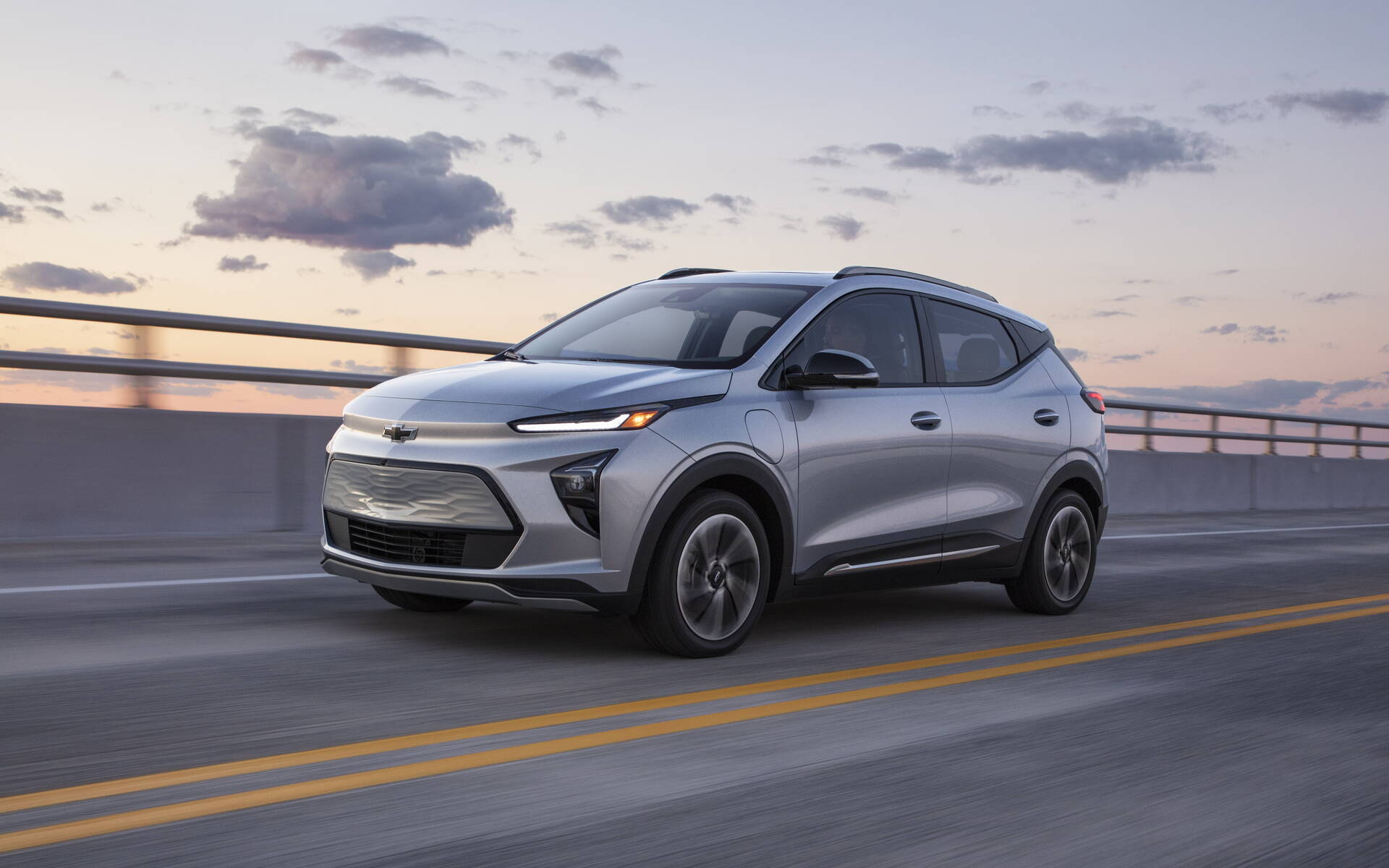
2. Chevrolet Bolt EV
The Chevrolet Bolt EV has long been praised for its affordability and range, making it an accessible option for many first-time EV buyers. However, its digital ecosystem leaves much to be desired.
The Bolt’s patch system lacks consistency and modernity, relying primarily on dealer-installed updates that are few and far between. This outdated strategy has made it difficult for Chevrolet to keep the vehicle’s software competitive, particularly as the rest of the EV market moves toward seamless over-the-air delivery models.
A critical point of failure came during the Bolt’s well-publicized battery recall, where more than one hundred thousand vehicles were flagged for risk of fire due to defective cells. While some mitigation came via a software patch to monitor battery behavior, the process for delivering this update was fragmented.
Many owners had to wait for manual installations, visit service centers multiple times, or even receive conflicting information from dealerships. The absence of a unified OTA infrastructure made an already serious problem harder to manage and highlighted Chevrolet’s lack of readiness on the software front.
Beyond crisis management, the routine update process for the Bolt EV is equally uninspiring. The infotainment system, while initially functional, becomes dated quickly and lacks the fluidity seen in rival platforms.
Basic navigation features, smartphone connectivity, and user interface responsiveness have all been flagged by owners as needing refinement.
Unfortunately, these shortcomings rarely get addressed because of the inefficient software rollout process. Updates are irregular, vaguely documented, and difficult to access unless the vehicle is undergoing unrelated service.
Chevrolet’s software limitations extend to performance tuning as well. Features that could be improved via firmware, such as acceleration calibration, charging efficiency at various stations, or the behavior of regenerative braking have mostly remained unchanged since vehicle delivery.
There’s very little sense that the Bolt evolves once it’s in the owner’s hands. This fixed nature can be frustrating in an industry where even mid-tier EVs now promise performance gains and energy-saving tweaks through simple software downloads.
While GM has invested heavily in the Ultium platform for its future electric vehicles, which promises stronger OTA infrastructure, the Bolt remains anchored to legacy systems.
Its current software strategy feels like a missed opportunity for a car that otherwise represents a practical and smart introduction to EV ownership. The Bolt proves that range and pricing are only part of the equation; without consistent software support, the experience feels limited and disconnected from the future of electric mobility.
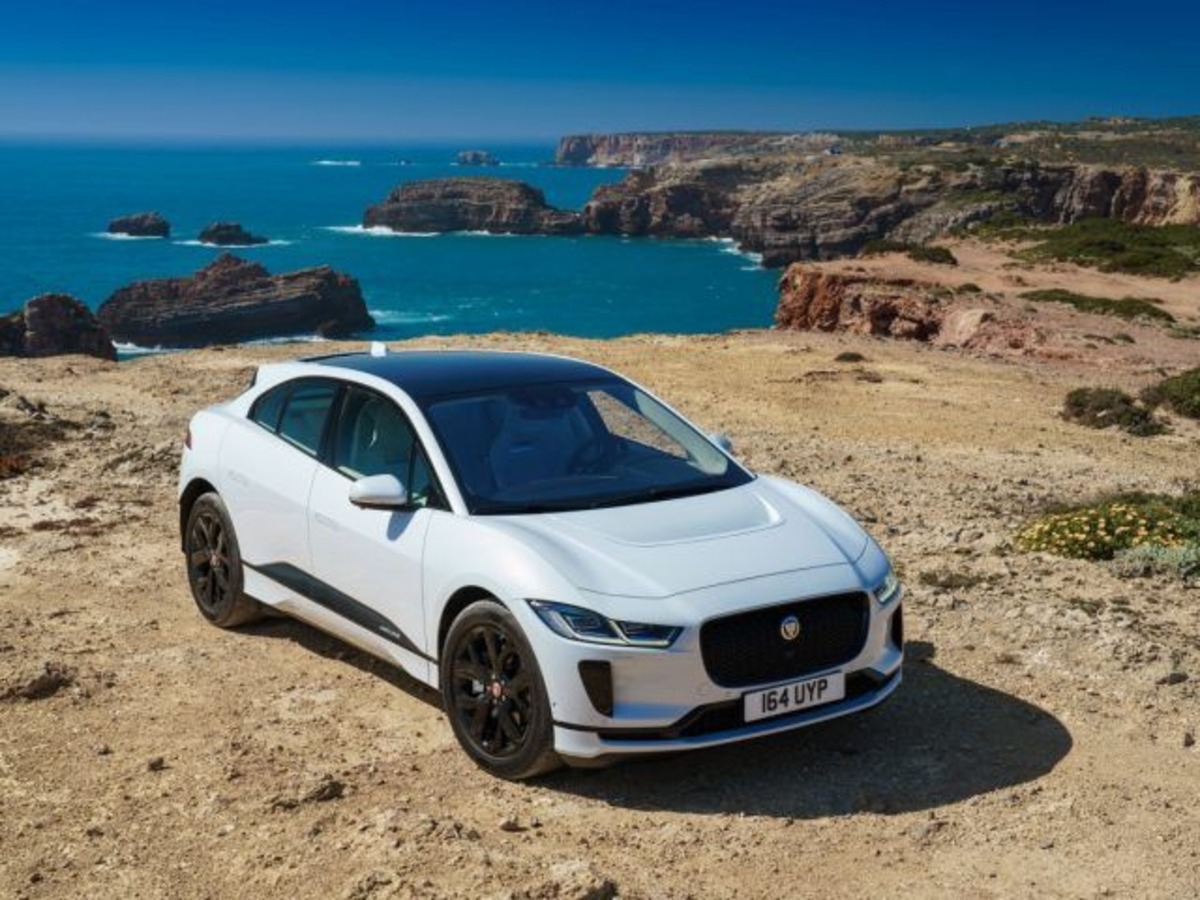
3. Jaguar I-PACE
The Jaguar I-PACE entered the EV market with a bold promise: a high-performance, luxury electric SUV that could compete with the best. While its design and ride quality met that challenge, its software update system has struggled to keep up.
Initially, Jaguar didn’t offer meaningful OTA support at all. Even basic navigation and interface fixes required dealership visits, and the company only began offering OTA functionality well after the vehicle had launched. This delay set the tone for what would be a rocky and inconsistent software experience for early adopters.
Even after OTA capability was added, the rollout of updates has remained sluggish. Many owners report long intervals between patches and a lack of clarity about what each update includes. Sometimes, improvements are negligible or don’t function as expected.
In some cases, updates introduced new bugs that had to be corrected later. This uneven quality control has made owners cautious, and some prefer to delay installations out of fear that a new issue will arise. For a luxury product, this kind of uncertainty is especially damaging.
One issue that stands out with the I-PACE is its fragmented system architecture. Unlike Tesla or Rivian, Jaguar did not build its vehicle systems on a fully centralized digital platform. This makes large-scale updates more complex and risky. Only certain parts of the vehicle, primarily infotainment and navigation, are routinely updated.
More essential systems, such as driver-assistance software, battery management, or drivetrain behavior, still require physical servicing for modification. This severely limits the value of the I-PACE’s OTA system, making it feel half-built rather than fully realized.
User experience within the vehicle has also suffered due to the slow update strategy. The interface has been criticized for lag, outdated graphics, and underwhelming functionality.
Features like voice control and mobile integration feel clunky, and there is little evidence that Jaguar is prioritizing these complaints with targeted patches. For a vehicle positioned in the high-end segment, this digital stagnation creates a disconnect between the brand’s premium image and the experience it delivers to owners.
Jaguar has stated its commitment to improving OTA capabilities across future models, especially as the company moves toward an all-electric future.
However, for current I-PACE owners, those promises may come too late. The inconsistent patch system and the lack of meaningful evolution over time have left the vehicle behind in the software race. For a car that has so much potential in terms of hardware, its digital shortcomings serve as a frustrating counterweight.
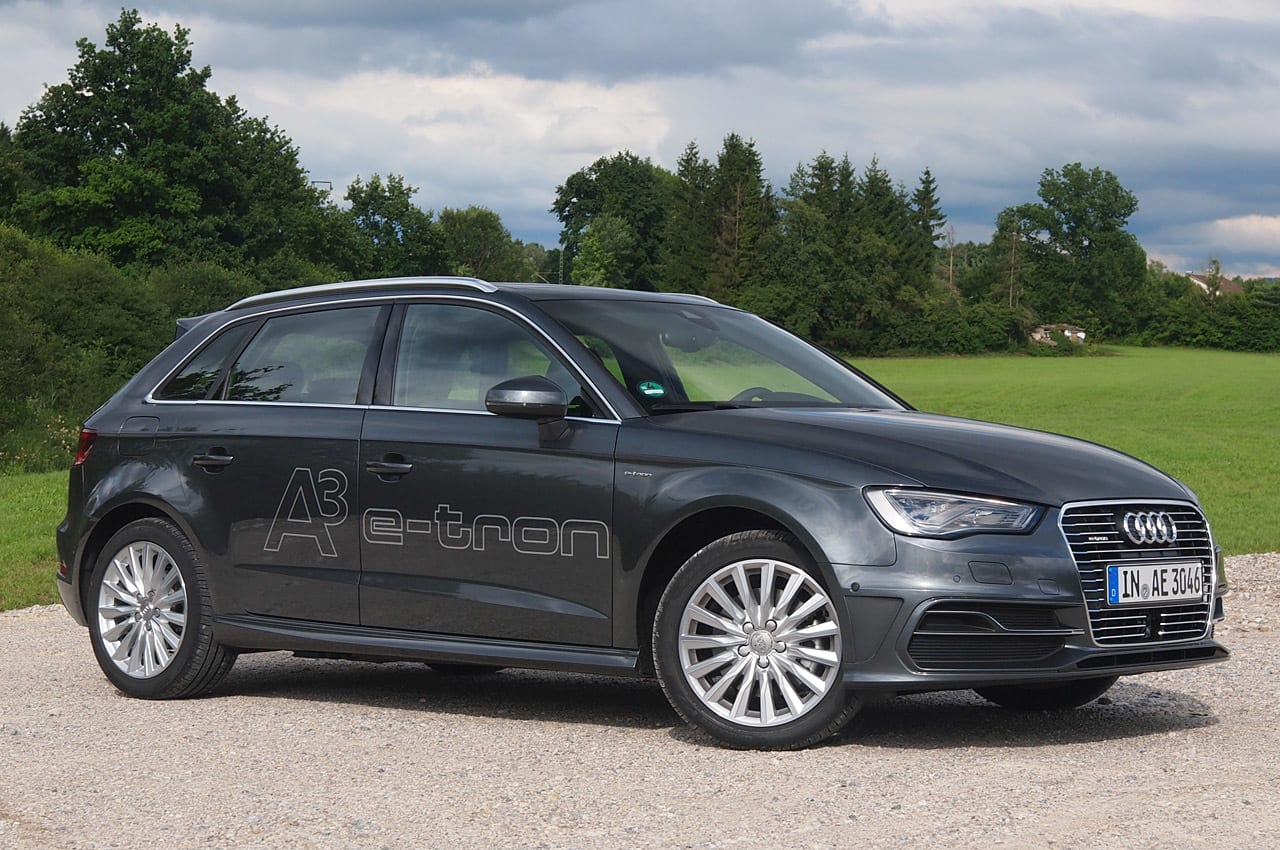
4. Audi e-tron (Pre-Q8 Models)
The original Audi e-tron SUV launched with high expectations, as it was one of the first premium EVs from a legacy brand. While the vehicle delivered on refinement, comfort, and driving experience, it missed the mark with software.
Early e-tron models were not built with strong OTA infrastructure in mind. Most updates had to be handled through dealership service, which made the ownership experience feel more like that of a traditional internal combustion vehicle than a cutting-edge electric car.
Audi’s software platform at the time was not designed for real-time remote support. The infotainment system, although visually appealing, struggled with sluggish performance and limited app integration. Bugs in Bluetooth connectivity, slow system boot-up, and occasional freezing were not uncommon.
Unfortunately, fixes for these issues were neither rapid nor reliable. In many cases, Audi did not communicate clearly whether updates were even available. Owners often had to rely on word-of-mouth or manually inquire at service appointments.
The lack of seamless patching also affected the vehicle’s broader ecosystem. Audi’s connected services, such as the myAudi app and in-car voice assistant, were initially clunky and lacked consistent performanc
. Firmware improvements could have addressed these problems more quickly, but the software deployment strategy was too slow and fragmented to make a significant impact. The e-tron felt like a car ahead of its time in design but behind in its digital support strategy.
Another consequence of the weak OTA system was a missed opportunity to improve efficiency and battery management. Competing EVs used updates to enhance real-world range or adjust charging behavior, but the e-tron remained largely static in this regard.
Even small improvements, like recalibrating energy recovery systems or fine-tuning route-based charging, were not pursued with urgency. This left the car vulnerable to feeling outdated in just a few years.
Audi has since developed a more modern OTA infrastructure for its newer EVs, particularly under the Q8 e-tron badge and the PPE architecture shared with Porsche.
However, owners of the earlier e-tron models have been left behind. For a brand with a reputation for cutting-edge engineering, the lack of software agility in the early e-tron lineup undermines the otherwise impressive performance and craftsmanship of the vehicle.
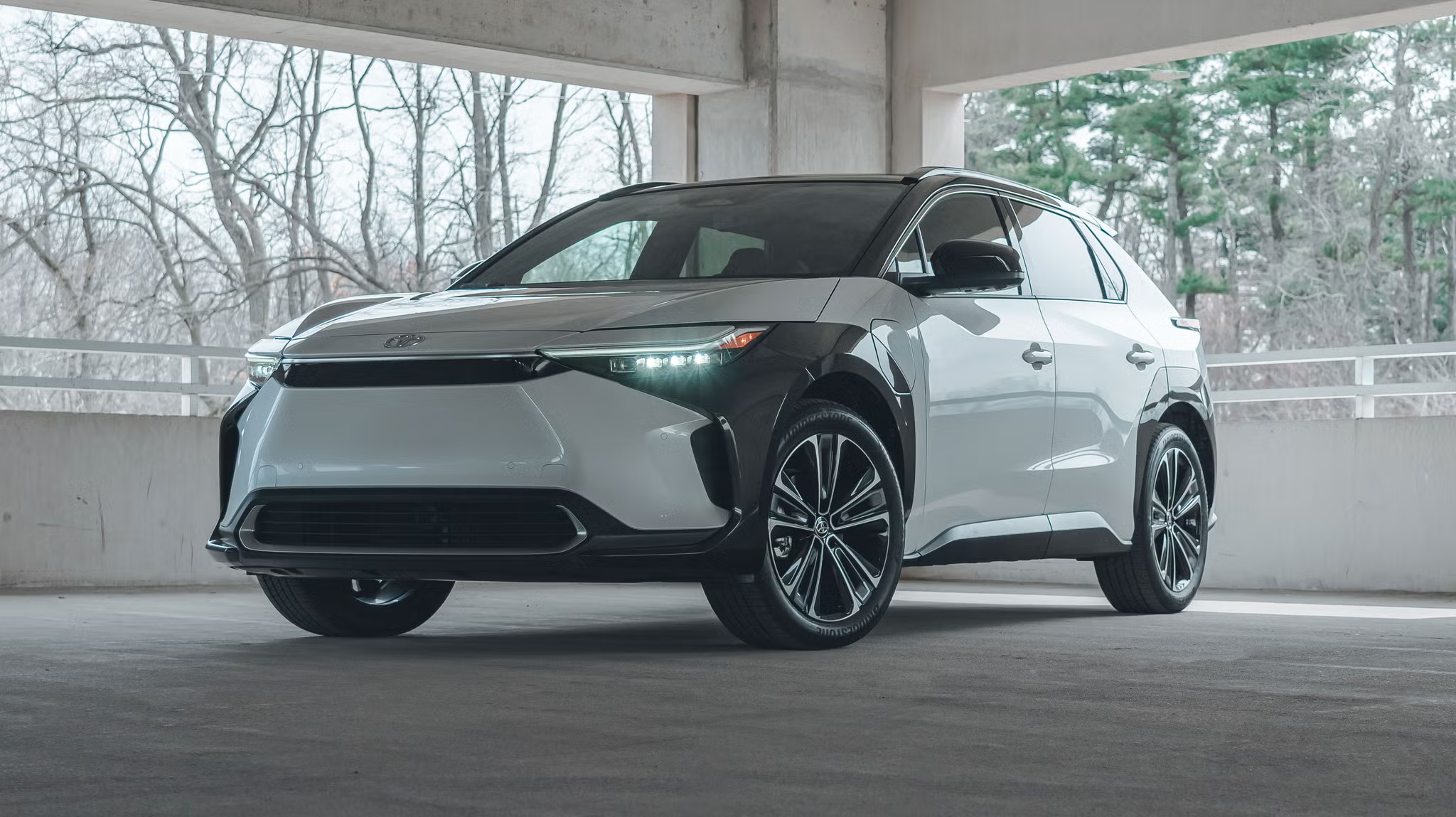
5. Toyota bZ4X
Toyota’s much-anticipated entry into the all-electric market, the bZ4X, brought with it the expectation of world-class reliability and innovation. Yet, its software and patch system have fallen flat. Unlike rivals that invested in full-feature OTA platforms, the bZ4X launched with limited update capability and unclear plans for expansion.
Most software changes still require dealership visits, and Toyota has provided minimal communication about what is being updated and when. For customers expecting a modern, connected experience, this outdated approach feels off-brand.
The vehicle’s infotainment system is a clear weak spot. It lacks the polish and responsiveness of competing systems, with noticeable delays in touch recognition and limited customization options.
While Toyota has introduced updates to address some of these problems, the delivery method requiring dealer intervention limits reach and effectiveness. Many owners simply never receive these fixes unless they proactively book service. This reactive model puts the burden on the customer, which runs counter to current software norms.
Additionally, Toyota has been conservative with feature deployment through software. Elements like regenerative braking levels, EV mode customization, and navigation intelligence have seen little improvement since launch.
These are precisely the types of features that rival brands routinely adjust and enhance through OTA, giving drivers a sense that their vehicle is evolving. With the bZ4X, what you buy is what you keep there is little evidence of growth over time through software.
Toyota’s communication strategy around updates has also contributed to owner frustration. There is no central platform or app notification system that keeps users informed about new software availability.
Patch notes are hard to find, and customer support often lacks specific answers about digital features. For a company known for excellent mechanical engineering, this digital silence is jarring and feels like a misalignment with modern EV expectations.
While Toyota may be planning broader OTA capabilities for future electric vehicles, the bZ4X serves as a cautionary tale about underestimating the role of software in the EV circle.
Without robust patching systems, even the most dependable automaker risks falling behind. The bZ4X may be a mechanically solid vehicle, but its lackluster software support leaves it trailing in a race that is increasingly won through connectivity and digital agility.

